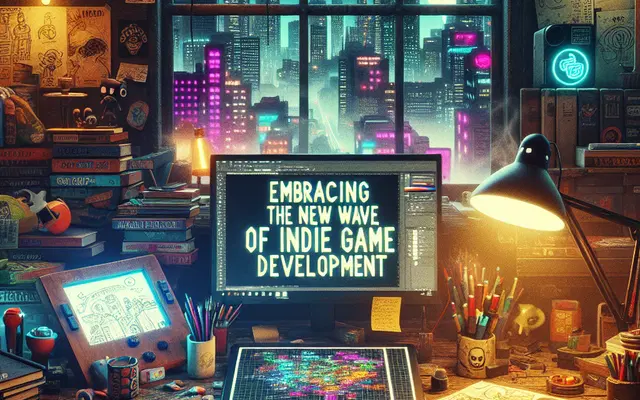Evolving Trends in Indie Game Development and Design

Navigating New Trends in Indie Game Creation
The landscape of indie game development is witnessing a remarkable transformation as new trends constantly emerge. With advancements in technology and the rise of accessible game development platforms, individuals and small teams are now empowered to create innovative and engaging experiences. This wave of change has brought forth a surge in creativity, as game designers defy conventional norms and experiment with novel narratives and gameplay mechanics. Staying abreast of these trends is essential for aspiring game creators who seek to make a meaningful impact within the indie community.
In the realm of indie gaming, the toolkits and techniques employed by developers are pivotal to the uniqueness of each game. From open-source engines to sophisticated design software, the array of tools available today enables designers to translate their most intricate visions into playable realities. Moreover, understanding and utilizing these tools efficiently can drastically reduce development time and foster an environment of continuous learning and improvement. As such, indie developers must constantly refine their craft by exploring and adopting new techniques that can elevate their games to new heights.
The release of a new indie game can send ripples through the gaming community, influencing trends and setting benchmarks for quality and originality. As these games break new ground, they garner attention from both gamers and industry professionals alike, showcasing the endless potential present within the indie scene. Such releases often inspire fellow developers and build a sense of camaraderie among those who seek to push the boundaries of game development. The impact of these fresh titles is a testament to the vibrant dynamism that indie games bring to the larger gaming landscape.
Toolkits and Techniques: Crafting Unique Gaming Experiences
The indie game development landscape is constantly evolving as creators seek new ways to captivate and engage players. Traditional tools are being replaced or enhanced by versatile engines like Unity and Unreal, which empower developers with greater flexibility and control. At the same time, open-source projects such as Godot are democratizing game creation, making it accessible to those with limited resources. These advancements in toolkits are allowing indie developers to push the boundaries of game design and create unique gaming experiences that were once the domain of major studios.
The adoption of cross-platform development techniques is another game-changer for indie devs striving to maximize their reach. With the ability to deploy games across multiple systems—from PC to consoles and mobile devices—indie titles are enjoying unprecedented exposure. Moreover, techniques such as pixel art, procedural generation, and narrative-driven design are seeing a resurgence, as they allow for distinct visuals and innovative gameplay. The blending of these old and new techniques is what sets contemporary indie games apart from the mainstream.
The integration of community feedback is arguably the most definitive trend shaping indie games today. Platforms such as itch.io and Game Jolt facilitate early access to titles, allowing developers to iterate based on real-world user input. This collaborative approach not only ensures that games are well-received upon official release but also fosters a strong bond between creators and their audience. Indie developers who harness this trend effectively can create a loyal fanbase that contributes to the game's long-term success.
The Impact of Fresh Indie Releases on the Gaming Landscape
The indie game scene is continually revitalized by fresh releases that challenge traditional gaming conventions. These new titles often bring innovative mechanics, storytelling, and art styles to the forefront, setting new benchmarks for creativity in the industry. As a result, they not only captivate players but also inspire other developers to explore uncharted terrain in game design. The impact of such games is evident in the way they encourage diversity in gameplay and thematic expression, contributing significantly to the evolution of gaming as both an art form and a medium for personal expression.
Moreover, the release of groundbreaking indie titles has a ripple effect throughout the gaming community. It emboldens smaller studios to take risks and push the envelope in terms of narrative and gameplay. The collaborative ethos within the indie scene further amplifies this effect, with developers often sharing their experiences and learnings with the community. This camaraderie not only strengthens the indie scene but also leads to a rich tapestry of games that offer a wide array of experiences unlike anything seen in mainstream gaming.
It is also worth noting that with every successful indie release, the boundaries of what is considered commercially viable in the gaming industry are expanded. This economic validation encourages investment, both in terms of capital and attention, from wider audiences and industry stakeholders. Consequently, this fosters an environment where more innovative and diverse games can thrive, changing the gaming landscape to one that is more inclusive and reflective of a broader range of voices and experiences.












